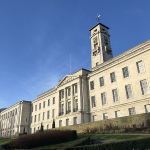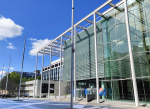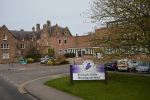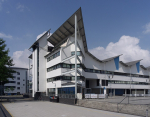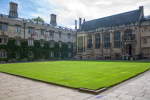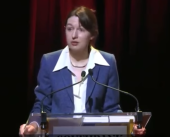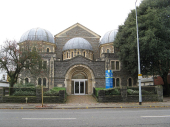
The Soviet-designednerve agent Novichok that Germany says poisoned Russian opposition figure Alexei Navalny is a military-grade toxin banned as a chemical weapon after it was
used in a previous attack in Britain.
The newest class of nerve agent, the Novichok family of toxins was developed by the Soviet government towards the end of the Cold War.
Little was known of them until 2018, when they were used in the English city of Salisbury in the attempt to kill a Russian ex-spy, an attack that Western agencies blamed on the Kremlin.
Navalny fell ill after boarding a flight in Siberia last month and was initially treated in Russia before being flown to Berlin.
Doctors in Russia said they found no trace of a toxin, but the Charite hospital in Berlin indicated he was poisoned with a type of cholinesterase inhibitor -- a group of chemicals that include pesticides and nerve agents like Novichok, VX and Sarin.
Germany on Wednesday said army tests had confirmed that the substance used was a Novichok.
- 'Extremely toxic' -
The name is Russian for "newbie" or "newcomer".
The Russian chemist who first revealed the existence of Novichok nerve agents told AFP in 2018 that it took 15 years to develop them using tests on animals.
Vil Mirzayanov, who moved to the United States in 1995, said that an attack with the nerve agents was excruciating and could be fatal.
"Only the Russians" developed this class of nerve agents, he told AFP at the time of the Salisbury poisonings. "They kept it and are still keeping it in secrecy."
Novichok toxins are thought to be used in the form of an ultra-fine powder, or like other nerve agents, in liquid or vapour form.
The ingredients for the toxin are transported separately and are safe until mixed together, said Richard Parsons, senior lecturer in Biochemical Toxicology at King's College London.
"They are extremely toxic," he said, adding that the nerve agent was "unavailable from anywhere except the Russian military as far as I am aware".
Nerve agents affect the central nervous system by disrupting communication between the brain, the main organs and muscles.
A signalling overload results in loss of muscle control which can lead to breathing difficulties and paralysis.
In severe cases the victim may asphyxiate, suffer heart failure and die.
"Individuals could be exposed to Novichok through skin absorption or from inhaling or ingesting it," said Wayne Carter, Associate Professor, University of Nottingham.
- Atropine antidote -
The Berlin hospital has said Navalny was being kept in a medically induced coma and treated with the antidote atropine.
This relieves symptoms by blocking acetylcholine -- a chemical transmitter that controls muscle contraction.
Nerve agents attack the enzyme that controls acetylcholine, leading to an overproduction and muscle malfunction.
With time, the body clears out the nerve agent and starts producing the acetylcholine-controlling enzyme itself.
"But in the main it is wait-and-see -- you have to wait for the body to break down the non-functioning cholinesterase enzyme and produce more, and this can take a long time," said Parsons.
In the Salisbury poisoning, former Russian double agent Sergei Skripal and his daughter escaped death after medical treatment.
- Risk to others -
But the 2018 attack also led to the death of a British woman who came into contact with the nerve agent, as well as injuring several others including a policeman.
The decontamination operation in the sleepy Wiltshire town took almost a year and involved a dozen sites.
Moscow denied all involvement and insists it has destroyed all of its chemical weapons.
Navalny's supporters believe he was poisoned by a substance in the cup of tea he drank at the airport.
Parsons said this may mean the risk to others "may be significantly reduced, but you cannot rule out contamination of other areas, in particular the hospital and the airplane".
In adding Novichoks to an annex of the Chemical Weapons Convention's in November 2019, the global watchdog said it was adapting to "changing threats".
It was the first time that it had been revised since its entry into force in 1997. AFP










